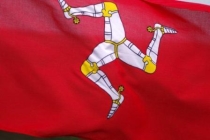Manannán Mac Lir, Son of the Sea, Celtic Sea God and Protector of Mannin

Manannán is a Celtic sea god and associated with the Tuatha de Danaan. They are the Gaelic pre-Christian pantheon that are known in Ireland, Scotland and Isle of Man. His legend is widespread throughout the Celtic lands.
His father was Lir, God of the Sea. Both Lir and his son Manannán are mentioned in the work of ‘Sanas Cormaic’ by Cormac mac Cuilennáin, King of Munster. In Cormac's 9th century glossary, he links both to the sea.
In many Celtic stories, we are told of Manannán's wife, the Fairy Queen Fand, his sons Ilbhreac (Fairy King), Fiachna and Gaidiar, and daughters Áine, Aoife and Griane. Manannán also had a foster son named Lugh; the Great Warrior, on whom he bestowed his magical belongings. Manannán, above all, is heavily associated with the Isle of Man (Mannin).
The Island’s name is derived from his and he was Mannin’s first ruler and protector. It is said he could bring down a cloak of mist that would hide the island from foreign threat. Using his magic powers he controls the wind and the waves and bring forces to defend the island.
Manannán is known to have enchanted possessions that he uses when called upon. A magical boat, Scuabtuinne (Sweeper of the Waves) travelled without sail or oar and obeyed the thoughts of those who sailed it. The Cloak of Mists was capable of changing to every kind of colour and when Manannán was angry a thunderous sound would be made when the cloak flapped. The sword called The Answerer (Irish: Fragarach) that could strike through any armour. A spear called Ctann Buide (Yellow Tree). A breastplate which no weapon could pierce. He also uses his trusty horse Enbarr of the Flowing Mane who crosses land and sea. As one of the Tuatha de Danaan, Manannán, is part of the Otherworld (Aos Si). This is the mysterious world that runs parallel to the world of humans and is reached through mists, hills, lakes, ponds, wetland areas, caves, ancient burial sites, cairns and mounds.
To be under the rule and protection of this great Celtic God was and remains a great honour for the Manx people. In return for Manannán’s patronage the Manx offer him tributes in the form of rushes. These are presented on the date of the Summer solstice. Upon this day, it is customary to climb to the top of the hill of South Barrule on Mannin, where an offering of rushes is presented. Thanks are given for Manannán’s continued protection of the island and his help is sought in all aspects of life and work. The tradition of celebrating the importance of the Summer Solstice is reflected in the Manx National Holiday celebrating Tynwald Day (Manx: Laa Tinvaal). A ceremony that itself has its origins in ancient celebrations of the Solstice, although over time the Tynwald ceremony is now held annually on the 5th July.
The importance of Manannán to the Manx cannot be underestimated. Only the very foolish or those who seek to push their own religious agenda would claim that this veneration of the so called ‘old gods’ disappeared with the arrival of Christianity. Indeed in an island renowned for belief in Mooinjer veggey (little people), fairies and creatures of the Otherworld the old beliefs hold firm for many people to this very day. The Manx are quite happy to seek the help of ancient deities as well as more modern introductions to ease their way through life. Manannán continues to command respect on Mannin, There is a traditional Manx fisherman’s prayer in the native Gaelic language to Manannán:
Manannán Beg Mac y Lir, Manannán Beg Mac y Lir,
Bannee orrin as nyn maateyn, Manannán Beg Mac y Lir.
Mie goll magh as ny share çheet stiagh, Manannán Beg Mac y Lir.
Lesh ny bioee as ny merriu aynjee, Manannán Beg Mac y Lir.
Manannán Beg Mac y Lir, Manannán Beg Mac y Lir,
Bless us and our boats, Manannán Beg Mac y Lir
Good going out, and better coming in, Manannán Beg Mac y Lir
With live and with dead in the boat, Manannán Beg Mac y Lir
Further Reading
For those interest in the 'Otherworld', you might want to read our exclusive interview with Dr Jenny Butler.
Read about the 'Children of Lir' sculpture in Dublin's Gardens of Remembrance.
Content type:
- Manx
Language:
- English
- Log in to post comments







